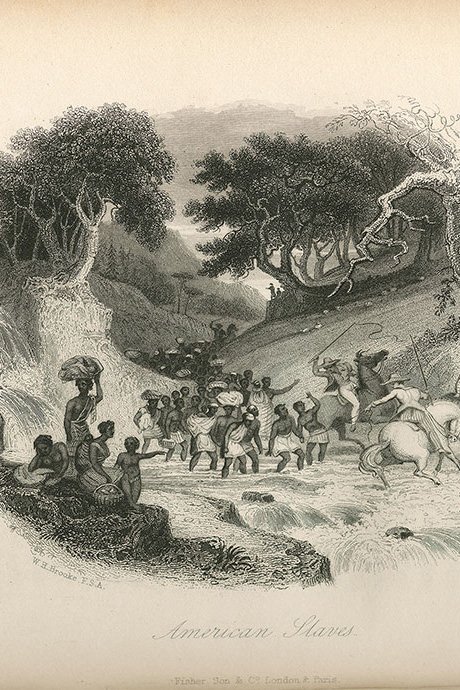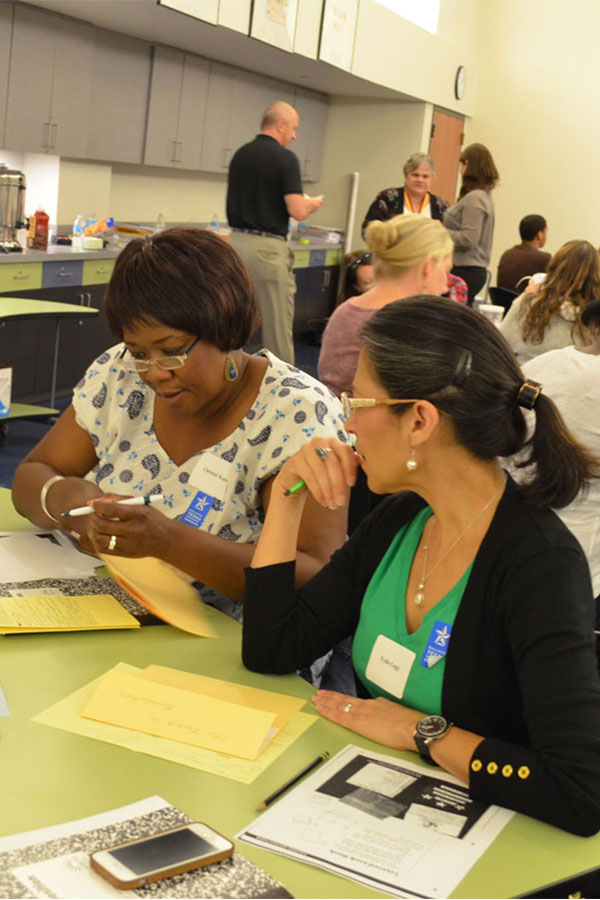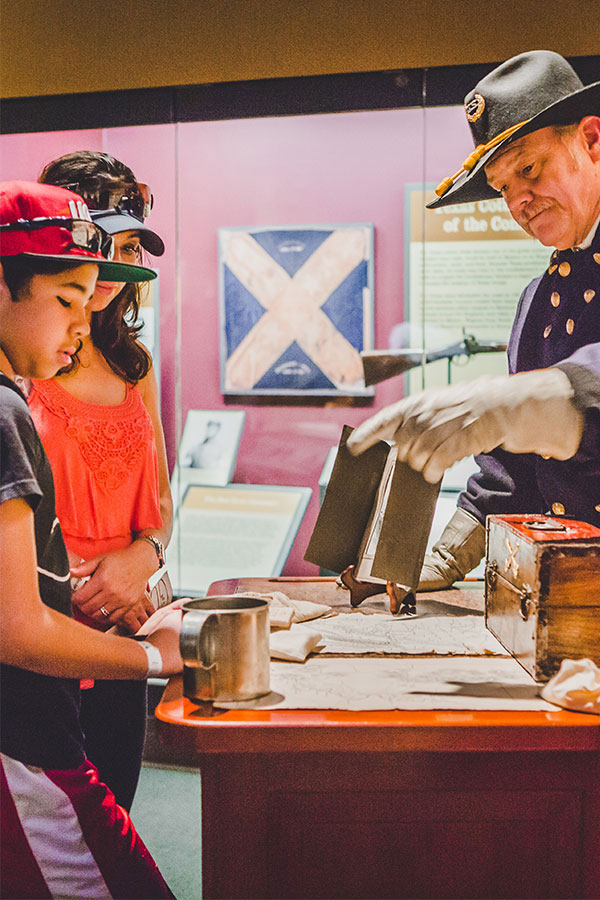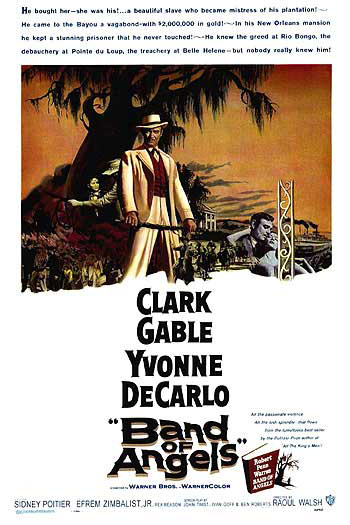Purchased Lives
The American Slave Trade from 1808 to 1865
The first slave ship bearing African captives arrived in British North America in Jamestown, Virginia, in 1619. Nearly two centuries later, the United States Congress enacted An Act to Prohibit the Importation of Slaves, which ended the transatlantic slave trade in 1808, but the domestic slave trade – a racialized system of bondage under which millions of men, women, and children lived and labored – continued to flourish for decades afterwards.
Purchased Lives: The American Slave Trade from 1808 to 1865 examines the lives of individuals intertwined in the domestic slave trade by exploring slavery’s reach beyond New Orleans and Galveston, beyond Texas, beyond the South, and into the very fabric of America. The exhibition uses first-person testimonies and original artifacts to explore how human beings were forced across the country, fought to resist enslavement, and how human lives became a primary currency of America’s pre-Civil War economy.
Inside the Exhibition
See more than 75 original artifacts, including period broadsides, paintings, and prints. Read ship manifests that list cargo and individuals, and witness first-person accounts from slave narratives and oral histories. A poignant collection of “Lost Friends” ads placed after the Civil War by newly freed people attempting to locate family members draws you into very personal stories of loss and hope. Using interactive displays, engage directly with the historical record, and search through a database tracking the shipment of more than 70,000 people to New Orleans from U.S. ports, including those along the Texas Gulf Coast.
Select Artifacts On View in the Exhibition
- The Black Republican, an African American newspaper from 1865
- Broadside advertising the steamship Ben Franklin, a method of relocating slaves to work in the deep south
- Slave's livery coat from the household of Dr. William Newton Mercer
- Postcard depicting a former slave standing on the block from which she was sold
- Slave collar with bells, a deterrant to runaway slaves
- Twelve Years a Slave, a true tale of abduction, slavery, and regained freedom
Press Materials
 |
Purchased Lives: The American Slave Trade from 1808 to 1865 has been made possible in part by a major grant from the National Endowment for the Humanities: Exploring the human endeavor. Any views, findings, conclusions, or recommendations expressed in this exhibition do not necessarily represent those of the National Endowment for the Humanities. |
Support for the Bullock Museum's exhibitions and education programs provided by the Texas State History Museum Foundation
Banner image courtesy The Historic New Orleans Collection
Lender
The Historic New Orleans Collection
On View
At the museum: 02/11/2017 - 07/09/2017




